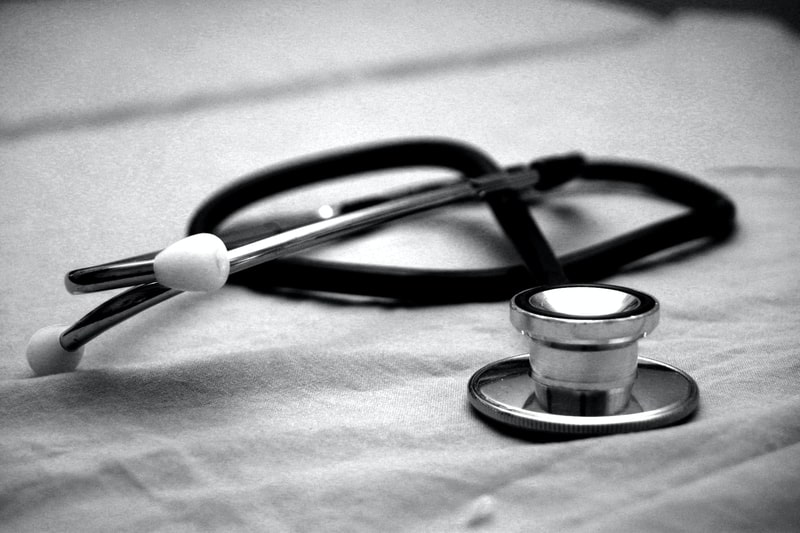
A medical misdiagnosis makes a difficult situation even worse.
When you’re already sick or injured and your doctor fails to identify the cause or prescribes the wrong treatment plan, you can suffer irreparable damage.
Medical misdiagnosis can even be fatal. In fact, medical mistakes kill more than 250,000 Americans every year. The numbers are staggering.
One recent study indicated that about 33% of all medical malpractice claims that result in death or permanent disability arise due to a medical malpractice misdiagnosis specifically. That’s nearly 85,000 individuals out of 250,000.
Theodore “Ted” A. Naima is a medical misdiagnosis lawyer ready to fight on your behalf if you’ve been injured because of negligence.
Here’s more information about what goes into a failure to diagnose lawsuit.
How Do I Know If I Have a Case?
The first thing you need to consider is whether or not you have a valid claim. The best way to make this assessment is to seek a consultation with a medical malpractice attorney as soon as possible.
Your attorney will go over the basic requirements of a medical misdiagnosis lawsuit and give you an initial assessment.
If it seems like you may have a misdiagnosis claim, your attorney can connect you with the right medical professionals to review your specific injuries and the treatment you received.
To file a successful medical misdiagnosis claim, you will need to prove that the provider was negligent. To do so, you must demonstrate four major elements:
- The existence of a duty of care;
- A breach of that duty of care;
- That the breach caused you harm; and
- The amount of damages you suffered.
These same requirements apply to other civil claims like car accidents. When it comes to medical malpractice, however, proving these elements can be a little more complex.
Frequently Asked Questions About A Misdiagnosis Lawsuit
1. Did the Medical Provider Have a Duty?
To prove that the medical provider had a duty to you, you must first establish that you had a doctor-patient relationship with them. This is typically the easiest element to prove.
If you can show that the provider was somehow involved in your care—whether as a doctor, nurse, hospital, etc.—you can typically establish that they did, in fact, have a duty to you.
2. Did the Medical Provider Breach Their Duty of Care?
The next element is more difficult: you have to show that the provider breached their duty of care.
Medical providers have a duty to provide the level of care generally accepted by the medical community.
To prove they breached that duty, you need to show that another provider of similar skill and experience would have acted differently.
To prove that a medical provider breached their duty, you need the assistance of a medical expert.
The expert will testify to the standard of care the medical provider should have followed and explain how your medical provider failed to meet that standard.
3. Did the Misdiagnosis Harm the Patient?
Next, you have to prove that the misdiagnosis caused you harm.
Take a case of strep throat, for example. If you go to the doctor for a sore throat and they tell you it’s cold when it’s really strep, that’s a misdiagnosis.
But if you went home and recovered with a few days of bed rest, the misdiagnosis did not cause you any harm.
On the other hand, if you developed complications and had to be hospitalized because the doctor did not put you on antibiotics when you first showed symptoms, then the misdiagnosis harmed you.
In that case, you could seek compensation for any damages you would not have suffered if the doctor had not misdiagnosed you.
As with breach, you typically need an expert to show the connection between your harm and the misdiagnosis.
A medical expert can testify about how your outcome would have been better if you had not been misdiagnosed.
4. How Were You Damaged?
Finally, you have to prove the amount of your damages. In the case of a misdiagnosis lawsuit, you can recover compensation for things like:
- Past and future medical expenses,
- Past and future lost wages,
- Pain and suffering, and
- Lost enjoyment of life.
However, you must establish the value of your damages with evidence like medical bills, pay stubs, and witness testimony.
Your attorney can help you gather this evidence and calculate the full value of the damages you have suffered.
Was There an Error in Diagnostic Tests?
If your misdiagnosis stems from a testing error, it may be the fault of someone other than your doctor. Typically, diagnostic test errors stem from either:
- Faulty diagnostic testing equipment; or
- Human error.
In this case, you may not end up suing your doctor specifically. Instead, you might file your claim against someone like an equipment operator, technician, or lab worker.
When it comes to faulty equipment, you may end up holding someone like the equipment manufacturer or even the maintenance person accountable.
Misdiagnosis Examples
Medical misdiagnoses can happen in any number of ways. Here is a short list of types of misdiagnosis that can give rise to a medical malpractice misdiagnosis lawsuit:
- Missing a diagnosis entirely;
- Reaching the wrong diagnosis;
- Failing to diagnose a related or unrelated disease; and
- Failure to diagnose in a reasonable amount of time.
If you suspect that your misdiagnosis arose due to some other type of error, don’t fret.
The Law Offices of Theodore A. Naima have experience with many types of medical malpractice.
Contact Our NY Medical Malpractice Lawyer to Start Your Medical Misdiagnosis Lawsuit
At The Law Offices of Theodore A. Naima, we regularly help misdiagnosed clients recover damages after suffering significant injuries.
With medical malpractice as one of our most significant practice areas, we leverage deep experience to help you get the most out of your claim.
With offices in New York City, Long Island, and Florida, we welcome the opportunity to discuss your situation in person.
If you think you have a medical misdiagnosis case, call us today for your free consultation.
The information provided on this page speaks in general terms. Of course, there are often exceptions that apply in certain situations. For a complete list of all exceptions please consult the Consolidated Laws of New York. Attorney Naima is also happy to answer any questions you have about your injuries or ability to pursue a claim against the responsible party.



